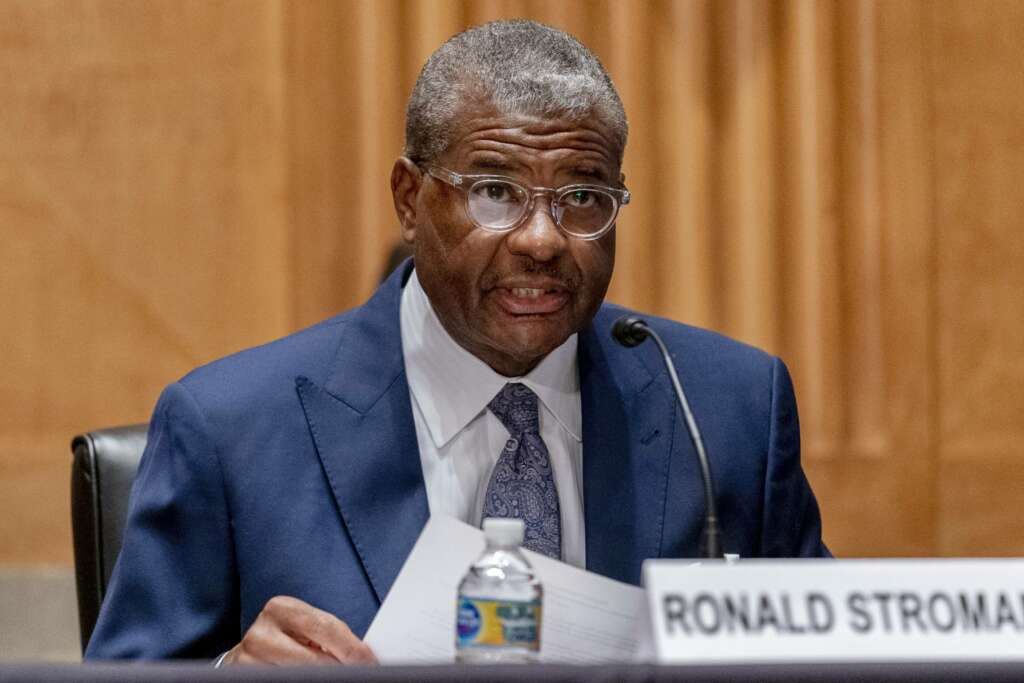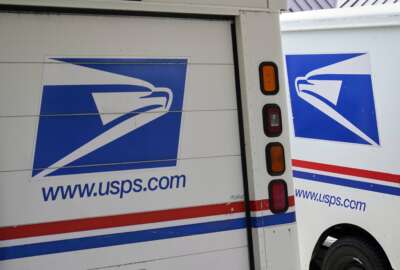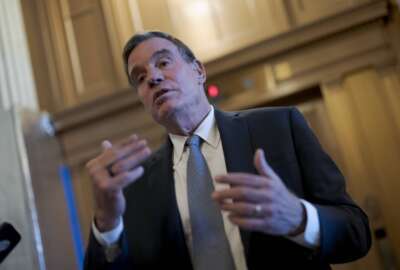USPS board member urges agency to slow network changes over persistent mail delays
A key member of the USPS Board of Governors is calling on the agency to slow down its network modernization plans, citing persistent mail delays.
A key member of the Postal Service’s leadership board is calling on the agency to slow down its network modernization plans, citing persistent mail delays in regions going through these changes.
Ron Stroman, a member of the USPS Board of Governors, and a former deputy postmaster general, said Thursday that “we need to slow down new network changes until service has gotten close to our service targets for 2024.”
Stroman called for USPS to slow down a major part of its 10-year reform plan, a day after a quarter of the Senate made a similar request to the agency.
In a letter sent Wednesday, 26 senators called on Postmaster General Louis DeJoy and the USPS board to halt network modernization changes until an independent regulator can weigh in on the merits of the plan.

“This network design is the most sweeping change to the Postal Service’s processing and delivery network in over 50 years, and we need to proceed carefully,” Stroman said during a board meeting at USPS headquarters.
Last November, Stroman told the USPS board to give the USPS network changes a “fair opportunity to improve service.”
“While that does remain true six months later, that opportunity has yielded declining service performance. Slowing further network changes and reexamining our plans is the responsible next step,” he said.
USPS, under its network modernization plan, is shifting to a “hub and spoke system” that will consolidate regional mail processing operations into large regional hubs.
Stroman said this model “has the potential to create a more efficient network, create a better working environment for employees and significantly reduce the Postal Service’s carbon footprint.”
“But it has some inherent risks,” Stroman said, adding that by reducing the overall number of plants and creating fewer, but longer, delivery routes, “the design increases the risk for delays.”
DeJoy conceded that USPS is “failing to meet service expectations” in Atlanta, Houston and Richmond, Virginia — where the agency has opened the first large mail processing hubs to consolidate local operations.
“We apologize for these conditions and are working hard, and know that we will soon be delivering the service the American people deserve,” he said. “Those impacts are inherent to the massive change processes that we are undertaking. Those impacts are also the result of errors in execution that we aim to correct quickly.”
However, DeJoy insists that the network modernization plan is an essential part of his 10-year Delivering for America plan — and that service will soon stabilize in areas facing the most severe mail delays.
“This is what we must continue to do to survive. We must evolve, and that means change. Unfortunately, to do that, we cannot just focus on delivering mail tomorrow, but must be focused on the long-term viability of the Postal Service. The fact is, the long-term viability of the Postal Service had been in doubt for over 14 years, prior to the issuance of the Delivering for America plan — and it still would be today, without the changes we are pursuing.”
DeJoy said that USPS, since the launch of the DFA plan, reduced projected operating loss by $15 billion, and that if not for inflation increasing beyond the agency’s projections, “we would be very close to break even.”
“I must remind stakeholders that the DFA plan is not a magic wand, and that change, particularly on the scale that is needed, is hard, uncomfortable for everyone and encounters errors of varying magnitude. We cannot snap our fingers and instantly implement our strategies that correct for years of failed practices,” he said.
USPS, he added, went from $160 billion in projected losses over the next decade to about $65 billion.
Over the past 14 years, DeJoy said USPS sustained $87 billion in net losses, in part because of an “onerous” requirement by Congress to pre-fund retiree health benefits well into the future. A long-awaited USPS reform bill, signed in April 2022, removed this requirement.
If USPS stayed on this course, DeJoy said, USPS would be on track to lose $250 billion over 24 years.
“That was the plan — the ‘Do-Nothing Plan,’ or perhaps the ‘Make-Believe It Wasn’t Happening Plan.’ There were no comprehensive initiatives from the Congress, the Postal Regulatory Commission, the mailing industry or postal management, for that matter, as to how to stem these losses,” DeJoy said. “No strategies or guidance on how to reinvigorate this organization so it can serve the public and survive long into the future.”
DeJoy bristled at Congress and the Postal Regulatory Commission for scrutinizing USPS performance under the 10-year plan so far — and has blamed inaction from both parties for the USPS’ financial predicament before his tenure.
“Has anyone in Congress or the PRC ever worked to stem $160 billion in projected organizational losses? … The answer is no. How do I know? Because other than at the Postal Service, this situation has never existed,” he said.
Amber McReynolds, chairwoman of the USPS board’s election mail committee said the network transformation efforts will have “no bearing on the Postal Service’s commitment to fulfilling its role in the electoral process and should result in more reliable service for our customers, including election officials and voters.”
USPS goes through “extraordinary measures” each year to ensure on-time delivery of ballots and election mail. Those extraordinary measures include extra deliveries and collections, arranging special pickups, expanded hours at processing facilities and bypassing some standard mail processing procedures to fast-track ballots to election officials.
USPS under its 10 year-plan is also rolling out one of the biggest electric vehicle fleets in the country.
DeJoy said USPS will receive 27,000 new vehicles this year — the biggest volume in more than 25 years. Of those, 10,000 will be electric vehicles. USPS is also planning to have 10,000 EV charging ports at 75 sites across the country by the end of the year.
USPS plans to purchase more than 106,000 new vehicles over the next six to eight years, to replace aging vehicles still on the road. Of those, 62% of those vehicles will be electric.
USPS reported a $1.5 billion net loss for the second quarter of fiscal 2024 — compared to a $2.5 billion net loss for the same period last year.
The agency reported $19.7 billion in total revenue for the quarter, a more than 2% increase compared to the same period last year.
First-class mail revenue increased by $280 million, or 4.4%, this quarter, despite a volume decline of 261 million, or 2.2%, compared to the same period last year.
Shipping and package revenue increased by $89 million, or 1.2% this quarter. USPS grew its package volume by 25 million pieces, or 1.5%.
USPS delivered about 84% of all first-class mail on time for the quarter — compared to nearly 91% for the same period last year.
USPS Chief Financial Officer Joe Corbett said USPS is continuing to grow revenue, manage costs within its control and is headed toward financial stability.
“While we continue to make significant progress on the Delivering for America plan, we all understand there is a lot of work we need to complete to get the Postal Service to long-term, self-sustaining financial health,” Corbett said.
Copyright © 2025 Federal News Network. All rights reserved. This website is not intended for users located within the European Economic Area.
Jory Heckman is a reporter at Federal News Network covering U.S. Postal Service, IRS, big data and technology issues.
Follow @jheckmanWFED






